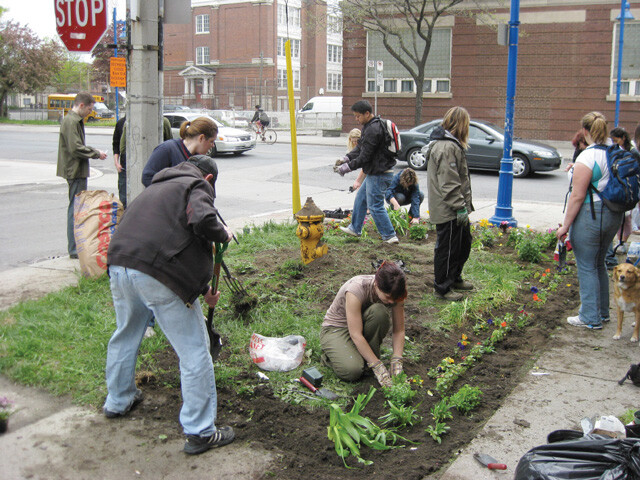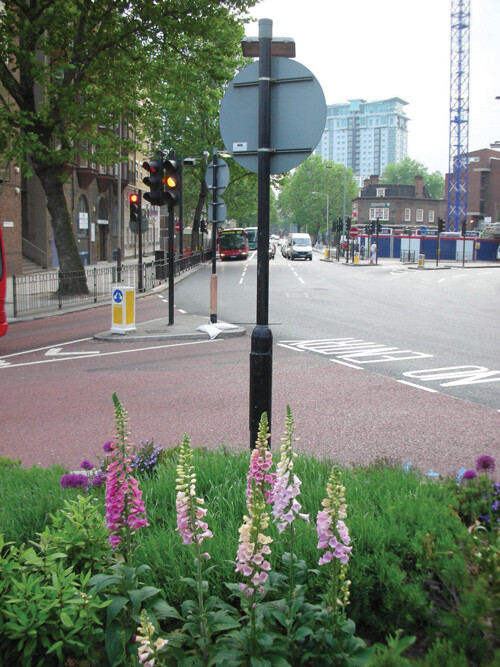Breaking the Law Never Felt So Fresh
the guerilla gardening movement

The movement known today as "guerilla gardening" – or planting on another person or entity's land without permission – is credited back to 1973, when a group of foliage-friendly folks in New York came together under the direction of Liz Christy to reshape a neglected private lot. The group, Green Guerrillas, transformed the lot that is now protected by the city and maintained by volunteers. But apparently they hadn't heard of the true pioneer, Johnny Appleseed.
Many of the publicized instances of guerilla gardening revolve around a semi-political activism purpose, usually reclaiming a public area that has gone unused or become an eyesore, and owners have revitalization low on their to-do list. So that's where concerned and determined citizens come into play.
Last spring a group in Stevens Point got arrested on a four-acre downtown lot that has sat unused for 15 years. Their crime? Trespassing and trying to build a series of raised garden beds.
Some sites are common areas that cities often don't want the burden of maintaining (like medians, roundabouts, or bollards), while others target run-down or uncommon spots of urbanization where something could grow, but often does not (like cracked streets and alleyways).
Most guerrillas wait until after nightfall to begin digging to protect their identity, since the act of altering someone else's property is illegal. Until recently, there were no reported arrests, just inquisitions and threats of action, because most think it's a positive thing. But all it takes is one person to find it disagreeable. Last spring a group in Stevens Point got arrested on a four-acre downtown lot that has sat unused for 15 years. Their crime? Trespassing and trying to build a series of raised garden beds.

But there's plenty of success stories, too, like the more than 1,000 volunteers who came together to create a massive garden overnight in Copenhagen back in 1996.
GuerillaGardening.org is the most visible arena for these. It's a blog with tips (use hearty perennials so you don't have to regularly maintain and water illegal plantings) as well as a social networking tool that lets gardeners document their finished projects. To date, the site has projects from more than 30 countries and boasts loads of active groups. Its creator also wrote the book On Guerilla Gardening.
One of the types of guerilla gardening is "Seed Bombing," involving throwing clods of packed soil, clay, and seeds into an area to slowly produce new vegetation in spots that have been gated off or are inaccessible. A group in L.A. called Greenaid has converted vintage gumball machines into seedbomb dispensers, and another in Brussels promotes May 1 as International Sunflower Guerilla Gardening Day. Guess what they call for?
These guerilla gardens aren't just for flowers and shrubs, either. Several countries where urban developments have left minimal farming land are using this as a way to plant edible crops. In fact, today almost 70 percent of Cuba's fresh produce is harvested from guerilla gardening in urban spaces.
DISCLAIMER: So, to be clear, we’re not covering this to promote it. It’s just, like, really interesting and stuff. It’s not like we have an agenda and have spots around the city in mind. Or that we’re hoping you’ll go out and beautify them. That’s illegal. And we’re not your accomplice. No matter how positive it is. Seriously. You didn’t hear this from us. You could have heard about this anywhere. And you knew that it was illegal. (Please don’t tell on us.)


